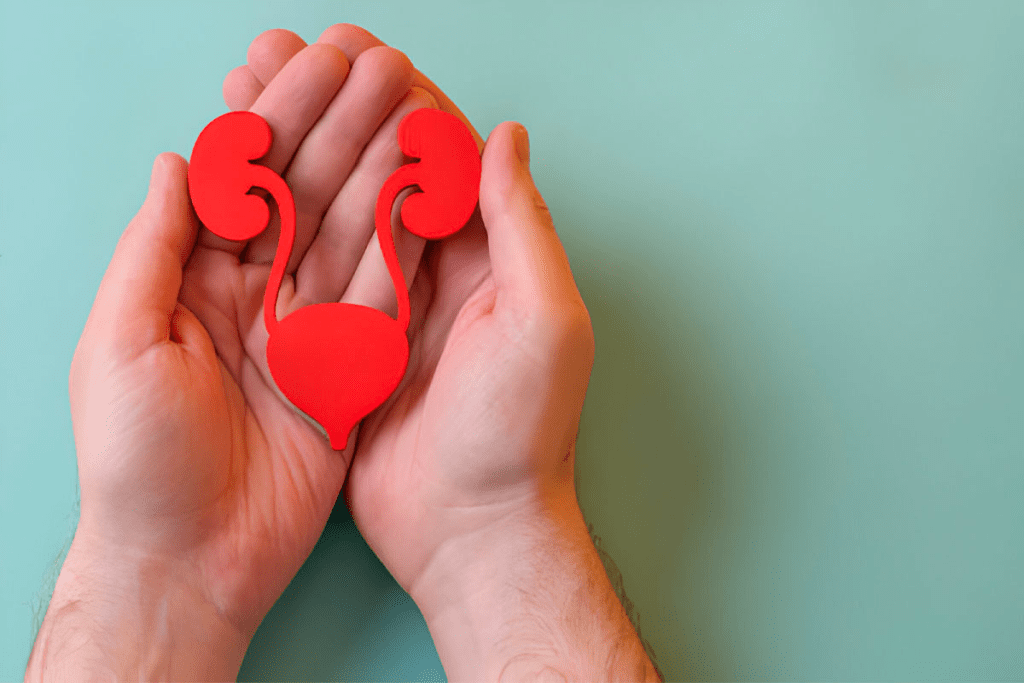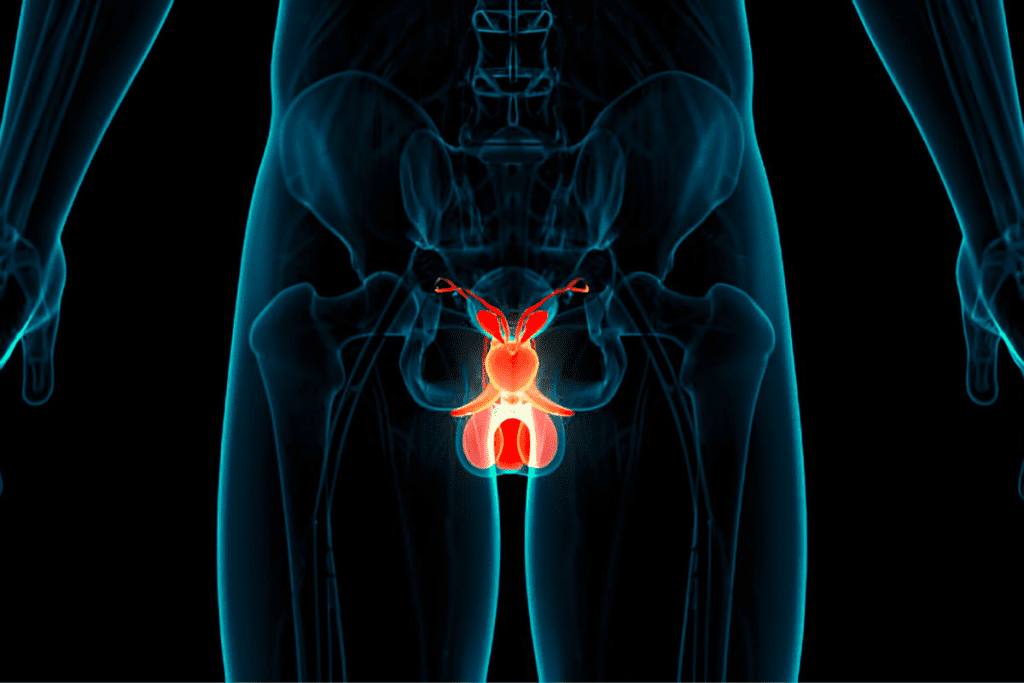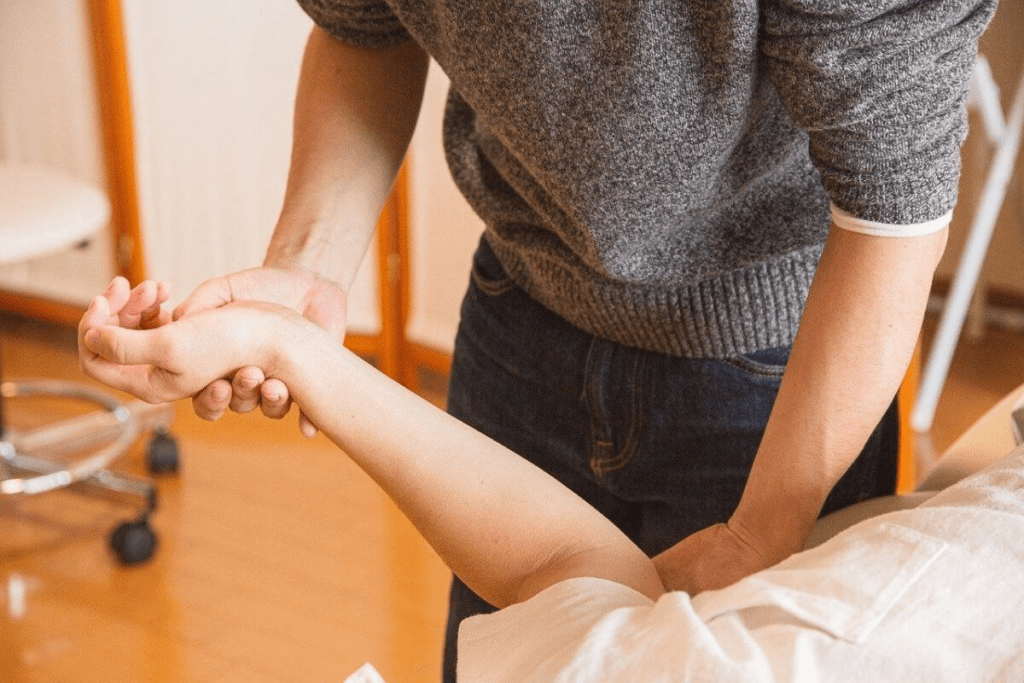Last Updated on November 25, 2025 by

Peyronie’s disease is a condition where scar tissue forms in the penis, causing it to curve. It affects up to 7%-9% of men, mostly those aged 40 to 60. This can make sex painful and hard to do.
Non-surgical home interventions are a good way to manage Peyronie’s disease. Penile traction therapy (PTT) is one method. Studies show it can straighten the penis by 11.7 ° and add 0.5 cm in length after 3 months of use.
Peyronie’s disease can really hurt a man’s confidence and relationships. While surgery isn’t always needed, home therapies backed by science can help. They can make symptoms better safely and effectively.
Peyronie’s disease is a condition where scar tissue forms inside the penis. This can make the penis curve or bend. It often causes pain when a man gets an erection.

Peyronie’s disease is not caused by infection or cancer. It’s not contagious either. Studies show that about 1 in 100 adult men in the U.S. have it.
It mainly affects men between 40 and 60 years old. “The exact cause of Peyronie’s disease remains unknown,” says a leading urologist. He believes it often starts from injury or trauma to the penis, leading to scar tissue.
This condition can cause the penis to curve, hurt during sex, and make it hard to have sex.
Common symptoms include penile curvature, pain during erections, and a palpable plaque. The disease can progress differently for everyone. Some men may stay the same, while others see their symptoms get worse.
The exact cause of Peyronie’s disease is not known. But, there are risk factors. These include:
Knowing these risk factors and the nature of Peyronie’s disease is key to finding effective treatments. We will look at different treatment options next.
Penile traction therapy is a top choice for treating Peyronie’s disease without surgery. It uses a device to gently stretch the penis. This helps to fix curvature and make the penis longer.

Penile traction devices apply a steady, gentle pull on the penis. This action triggers changes in the cells and tissues. It can reduce curvature and increase length.
Key Benefits: This therapy is easy to do at home and doesn’t involve surgery. Studies show it can greatly improve curvature and length with regular use.
Many studies have looked into the effectiveness of penile traction therapy. They found that using these devices daily can reduce curvature by 11.7 degrees and increase length by 0.5 cm in three months. This makes it a promising treatment.
It’s essential to note that results can vary. Success depends on using the device every day and getting a good fit.
To get the best results, wear the device for 30-90 minutes a day. It’s important to use it regularly for several months to see improvements.
By sticking to these guidelines and using the device consistently, people with Peyronie’s disease can see big improvements in curvature and length.
Oral supplements are getting more attention for treating Peyronie’s disease. It’s key to know how they help manage the condition.
Vitamin E is a top choice for Peyronie’s disease treatment. It’s thought to fight inflammation and slow disease growth. Some studies show it may improve symptoms, but more research is needed.
Antioxidant therapy, like vitamin E, tries to fight oxidative stress. This stress might cause Peyronie’s disease. The results are promising, but we need more studies to know its full benefits and limits.
Propolis, made by bees, is studied for its anti-inflammatory effects. It might help reduce Peyronie’s disease inflammation. Other natural options, like omega-3 fatty acids and curcumin, could also be helpful.
When thinking about oral supplements for Peyronie’s disease, be realistic. Their effectiveness can vary, and results may take months to years.
It’s also important to consult with a healthcare professional before starting any supplement regimen. They can discuss benefits, risks, and interactions with other medications.
Keep a treatment journal to track symptom changes and curvature. This helps you and your healthcare provider see how well the supplements work. It guides your treatment plan decisions.
Adding manual therapy to your daily routine can ease Peyronie’s disease symptoms. Techniques like plaque modeling exercises and gentle stretches can be done at home. They offer a gentle way to manage the condition.
Plaque modeling exercises are key in manual therapy for Peyronie’s disease. They help reduce curvature and improve function. Here’s how to do them:
Be gentle and careful to avoid pain or injury.
Gentle stretching is also effective for Peyronie’s disease. It improves flexibility and reduces curvature. Here’s how to stretch gently:
Consistency is key for gentle stretching. Regular practice can show improvements over time.
Manual therapy is safe when done right. If you feel pain, stop right away. Pain is a signal that something is wrong, and ignoring it can cause more harm.
To manage pain, try these:
By using manual therapy and following safety tips, you can manage Peyronie’s disease. This can improve your life quality.
Changing your lifestyle can help a lot with Peyronie’s disease recovery. Making smart choices can make treatments work better and boost your health.
An anti-inflammatory diet is key to managing Peyronie’s disease symptoms. Eating foods full of antioxidants, like fruits, veggies, and omega-3s, can cut down on inflammation. Focus on:
It’s also good to cut down on foods that cause inflammation, like processed meats, refined sugars, and saturated fats.
Stress reduction techniques are important for your health and Peyronie’s disease management. Activities like meditation, deep breathing, and yoga can help reduce stress. Doing these regularly can improve symptoms and quality of life.
Some habits can make recovery harder or worse for Peyronie’s disease symptoms. It’s best to stay away from:
By avoiding these bad habits and adding good lifestyle changes, people with Peyronie’s disease can see better results and health.
Managing Peyronie’s disease well means keeping track of your progress. By watching how your condition changes, you can make smart choices about your treatment.
Keeping an eye on your penis’s curve is key in Peyronie’s disease management. Use a gauge or ruler to measure changes. It’s important to measure regularly to see if things are getting better or worse.
Also, take photos of your erect penis from different sides. These pictures can show how well your treatment is working.
It’s important to check how much pain you’re in and how well you’re doing sexually. Use a pain scale (like 1-10) to rate your pain during erections or sex.
For sexual function, track things like how hard you get, how well you can penetrate, and how satisfied you are with sex. This info helps you and your doctor fine-tune your treatment.
Keeping a treatment journal helps you keep track of your progress and any changes. Write down:
By keeping up with this, you can spot patterns and make better treatment choices. This way, you can take charge of your condition and work better with your healthcare team.
Peyronie’s disease affects more than just the body. It can hurt a man’s self-esteem, his relationships, and his mental health.
Body image is a big challenge for men with Peyronie’s disease. They might feel embarrassed about their penis’s shape. This can lead to anxiety and depression. It’s important to face these feelings and find help.
For more information on managing the emotional aspects of Peyronie’s disease, you can refer to studies on the condition’s psychological impact, such as those found in peer-reviewed journals.
Talking openly with your partner is key to dealing with Peyronie’s disease’s effects on relationships. Sharing your feelings and concerns can make your bond stronger.
Tips for Communicating with Your Partner:
Access to the right support can greatly help with Peyronie’s disease. This includes online forums, support groups, and counseling services.
Some key resources to consider include:
By using these resources and keeping communication open, people with Peyronie’s disease can manage its psychological effects better. This can improve their overall life quality.
Home treatments can help manage Peyronie’s disease. But, some cases need medical help. We talked about treatments like penile traction, oral supplements, and manual therapy that you can do at home.
If you have a bad curve, pain, or trouble with sex, you should see a doctor. A healthcare provider can check how serious your condition is. They will suggest a treatment plan that might include medicine or surgery.
It’s important to know when to go to the doctor. If home treatments don’t work well, talk to a healthcare professional. They can guide you on the best treatment and support you during your recovery.
Understanding your treatment options and when to seek medical help is key. This way, you can manage your Peyronie’s disease better and improve your life quality.
Peyronie’s disease is a condition where scar tissue forms inside the penis. This leads to curved and painful erections.
Symptoms include a curved penis, pain during erections, and trouble getting or keeping an erection.
Penile traction therapy is very effective. Studies show it improves penile curvature and reduces pain.
Oral supplements like vitamin E and propolis may help with symptoms. But, they don’t cure Peyronie’s disease.
Follow the manufacturer’s instructions for fitting. Wear it for 30-90 minutes daily as recommended.
Yes, an anti-inflammatory diet, reducing stress, and avoiding bad habits can help manage symptoms.
Use tools to measure curvature changes. Assess pain and sexual function. Keep a treatment journal.
Some cases can be managed at home. But, seek medical help if symptoms don’t improve or get worse.
Address body image concerns, talk openly with your partner, and seek support. This helps with the emotional impact.
Seek medical help for severe symptoms, if home treatments fail, or if you have significant pain or sexual function issues.
Professional help offers advanced treatments, symptom management guidance, and emotional support.
Subscribe to our e-newsletter to stay informed about the latest innovations in the world of health and exclusive offers!